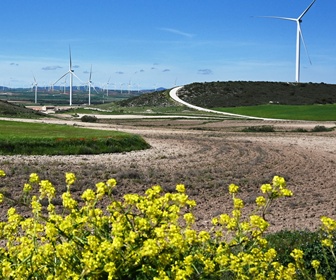Searching for the higher winds…
Wind farm developers try to maximise the output of wind farms as much as possible to make them more cost-efficient. Turbine manufacturers continue to develop larger turbines. A result of this is that turbines become bigger, with larger rotor diameter and higher hub height. But bigger turbines mean that new issues such as wind measurement, manufacturing and transportation need to be addressed.
.
{access view=!registered}Only logged in users can view the full text of the article.{/access}{access view=registered}Accurate wind measurement is essential for efficient wind farm layout. When the turbines become taller the measurements also need to be performed at a higher level. Heights increased from 40 to 50 metres, then to 60 metres, and now the minimum level seems to be the 80-metre level. The traditional tubular anemometric masts have not been able to go beyond the 60-metre level without becoming inordinately heavy. Lattice towers are able to reach a higher level but can be considered as permanent towers and are more costly. Using the 250-year old Euler column equations and aircraft design approach, the Ohmega Group developed a new lightweight structure which is able to achieve the 80-metre measurement at a fraction of the cost of the traditional lattice tower. On page 27, Pierre-Guy Charette of Ohmega describes the importance of accurate wind measurement and explains the concept of the company’s new wind measurement tower.
Other issues with turbines becoming larger are the demands on materials for manufacturing and transportation. With rotor diameters and turbine weight increasing, the demands on the towers also increase. As the towers grow taller, the over-turning moment increases. There are two different options for managing the loads of these massive turbines. The first is to increase the wall thickness of the structure, and the second is to increase the bottom diameter of the tower. At present, option number one is the only viable option because transportation restrictions dictate the maximum diameter allowed. Therefore, the demand is on the tower manufacturers to tool up with large rolling machines to enable them to handle the thick plate and to secure welding capacity to enable full penetration welds. Valmont started the Wind Energy group, which in turn has created products that will solve some of the major challenges currently presented by towers. On page 37 the company describes its modular tower, which can solve the issues for manufacturing and transportation.
Enjoy Reading
Floris Siteur
Publisher{/access}
Enjoy Reading
Floris Siteur
Publisher{/access}










